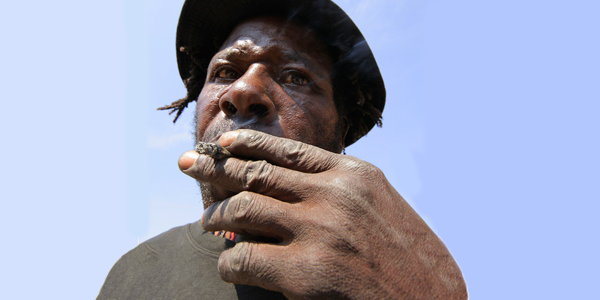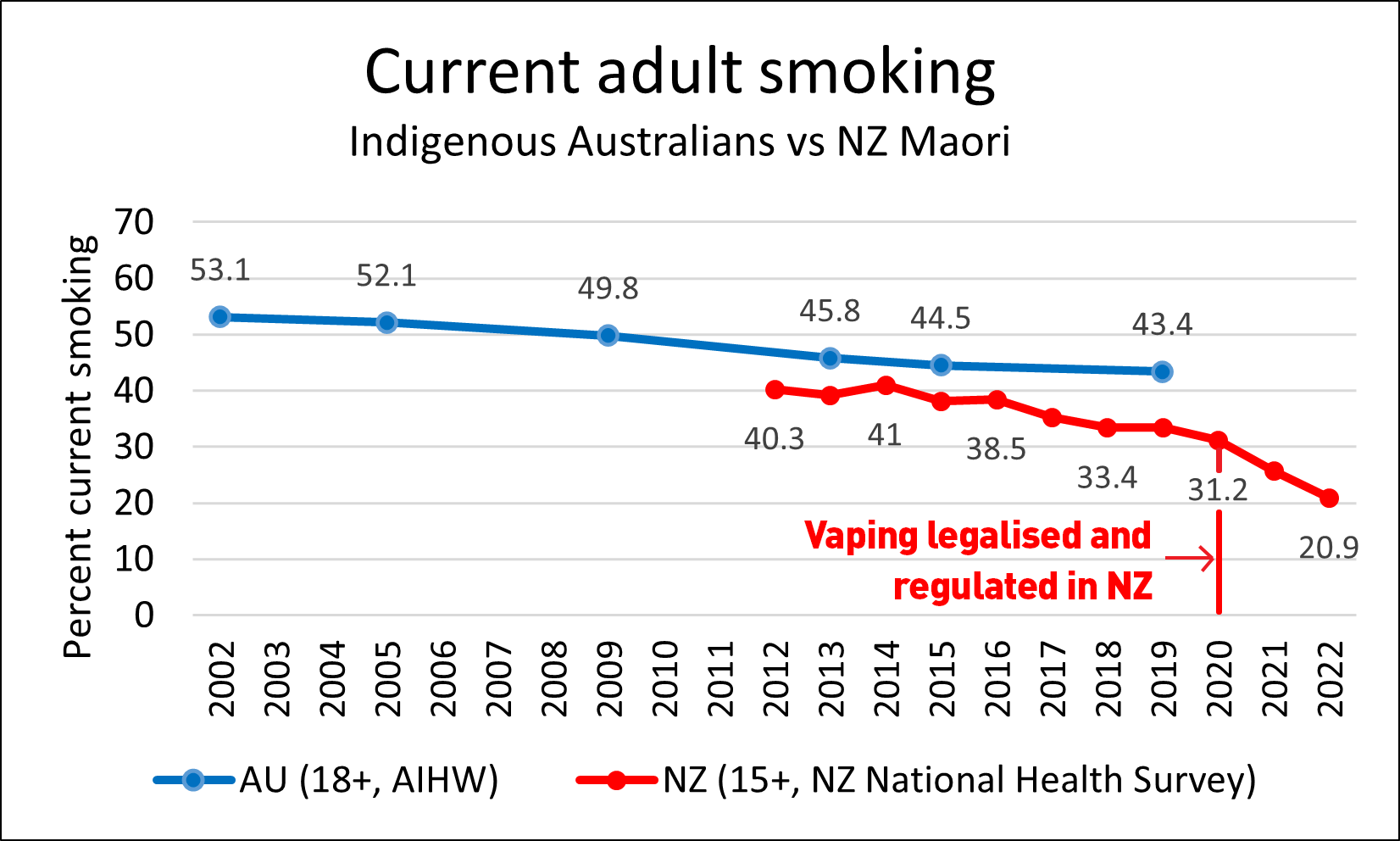
Post-Voice Referendum: Vaping as a path to Indigenous health and financial inequalities
Posted on October 16, 2023 By Colin
THE RECENT FAILURE OF THE VOICE REFERENDUM has left us searching for innovative solutions to address the crisis of Indigenous disadvantage and inequality in Australia. One such solution is the introduction of vaping as a harm reduction strategy—an approach that has proven remarkably successful in New Zealand among the Māori population.
Indigenous smoking in Australia remains a pressing national crisis.
The latest official survey in 2018-2019 revealed that a staggering 43.4% of Indigenous adults were current smokers, a rate three times higher than that of the general population
Despite significant investments in initiatives like the Closing the Gap program, progress in reducing Indigenous smoking rates has been disappointingly slow. Since 2004, Indigenous smoking rates have declined at only 1.4% per year, compared to the general population's 3% per year decline. Moreover, the smoking rate among Indigenous smokers over the age of 55 has remained unchanged since 2004, and there has been no significant change in smoking rates in remote areas.
Tragically, Indigenous Australians die nearly 10 years earlier than their non-Indigenous counterparts, with tobacco being the leading preventable cause of death—accounting for 11.9% of the total health burden and contributing to 20% of the health gap between Indigenous and non-Indigenous people.
In stark contrast, New Zealand's decision to legalise and regulate vaping in August 2020 yielded remarkable results.
Over the subsequent two years, the Māori adult smoking rate plummeted by 30% as addicted smokers transitioned to vaping
In 2021-22, only 20.9% of Māori adults (15+) smoked , demonstrating the potential of vaping to achieve similar results in Australia's Indigenous communities.

Current adult Indigenous smoking rates in Australia and New Zealand
Australia has traditionally championed a complete abstinence approach to smoking—"just quit." However, recent figures indicate that this approach is no longer effective and it has certainly failed Indigenous communities. Minister Butler's statement earlier this year confirmed that Australia's smoking rates have “flatlined”.
Growing evidence from other western countries supports the adoption of a harm reduction approach, allowing addicted smokers who cannot quit to switch to a safer alternative. While vaping is not entirely risk-free, it carries only a small fraction of the health risks associated with smoking.
In addition to the health benefits, there are substantial financial savings for smokers who make the switch to vaping
Australia's high cigarette prices place a heavy financial burden on low-income and disadvantaged smokers, leaving less income for essential needs like food, clothing, and housing. A smoker with an average daily habit of 13 cigarettes spends $9,500 annually, which is more than 50% of the Job Seeker allowance.
Vaping, on the other hand, costs only 10-15% of the price of smoking, saving the average smoker approximately $8,000 per year. This could have a transformative impact on Indigenous financial inequalities.
In New Zealand, regulated vapes are sold as adult consumer products from licensed retail outlets with strict age verification, mirroring the approach taken with cigarettes and alcohol. Smokers are embracing this alternative in large numbers, leading to a significant decline in smoking rates.
While it's crucial to prevent youth vaping, effective measures can be implemented to reduce its prevalence among young people, particularly non-smokers. In comparison, vaping is potentially life-saving for adult smokers, as two out of three long-term smokers will die prematurely due to smoking-related illnesses.
The smoking crisis in Indigenous communities demands an urgent solution, and vaping presents a potentially life-saving option that requires little to no government expenditure
Australia has a deep commitment to the well-being of Indigenous Australians, and after the Voice referendum's rejection, making vapes available as a quitting aid is a practical way to demonstrate our support. There are few measures that could make a more significant difference in addressing Indigenous health and financial disparities.